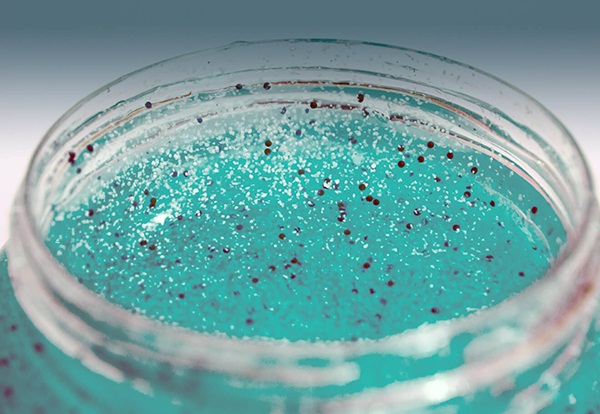There is a dark side to the beauty business which hits our water bodies and our marine ecosystems, posing a serious threat to all life in them.
Dr. Marianne de Nazareth
Lecturing in several colleges in the city as a professor of media studies I realise that beauty and beauty products are big ‘must-haves’ among my students, both girls and boys. The importance of looking good is imperative in today’s plastic culture, where beauty is a much sought-after aspiration among youngsters.
But there is a dark side to the beauty business which hits our water bodies and our marine ecosystems, posing a serious threat to all life in them. In a new study titled ‘Dirty Cleanser: Assessment of Microplastics in Cosmetics’, released by Delhi-based NGO Toxics Link, shows that shockingly large number of personal care cosmetic products (PCCPs) in India - including some of the leading brands - contain harmful microplastics. The 52-page study, based on the assessment of 35 PCCPs, underscores the disturbing fact that microbeads released from items of daily use, pose a serious threat to the environment, particularly the marine ecosystem.
A total of 19 face washes, 7 facial scrubs and 9 body washes were tested under this study and out of 35 samples, 20 were detected with presence of polymers. Among the 20 samples with polymers, 14 have microplastics beads. Among all types of PCCPs tested, the highest number of microplastics beads were detected in Neutrogena Deep Clean Scrub with 17,250 microbeads per 20g, followed by VLCC Natural Sciences Rose Face Scrub with 5,510 beads per 20g and Fiama Shower Gel with 4,727 microbeads per 20g. 70% of scrubs, 55% of body washes and 21% of face washes were found to have microbeads.
For the study, 20g of each of the 35 samples was taken for analysis, and FTIR was used for the identification of plastic particles in PCCPs. “It is shocking to find plastic microbeads in products from such large national and international brands. Many of these brands have stopped putting microbeads in their products in other countries but continue to use in India as we do not have outright ban on its usage”, said Priti Mahesh, Chief Coordinator at Toxics Link.
Toxics Link is an Indian environmental research and advocacy organization set up in 1996, engaged in disseminating information to help strengthen the campaign against toxics pollution, provide cleaner alternatives and bring together groups and people affected by this problem.
So what are microplastics and what is the environmental pollution they cause? Microplastic pollution is one of the most crucial environmental issues in recent times. Microbeads are solid primary microplastics with a diameter of less than 5 mm that are used in cosmetics products as ‘rinse-off’ or ‘leave-on’, for skin exfoliation etc. They are flushed down the drain after use and end up in Wastewater Treatment Plants (WWTPs), where they can escape into bodies of water. There is no efficient way of recovery once it has been disposed of, and because of them being non-biodegradable, they continue to affect the environment. Microbeads used in cosmetics are responsible for a significant proportion of the human-made solid waste in aquatic environments and impacts all marine life.
The size of microbeads detected in the products, tested in this study, was in the range of 32.55–130.92 m. “These small-sized microbeads can easily pass-through sewage treatment systems and swim to the ocean,” said Dr. Amit Programme coordinator, Toxics Link. The report indicates that 60–4312 microbeads could be released from an exfoliant in a single use (5 ml per use). According to the UN, there are as many as 51 trillion microplastics in the ocean, which is 500 times more than stars in our galaxy. The testing was done at National Institute of Oceanography, Goa.
The primary aim of the study, is to push stakeholders into reducing the use of microbeads. It also seeks to promote awareness on the devastating effect of microplastics in the marine environment. The study also stresses the need for safer substitutes that can replace these environmentally hazardous constituents. ‘Natural exfoliating materials’, it says, ‘including oatmeal, walnut husks, salt, whole oats, almond shell, may be the potential materials to replace non-biodegradable microbeads’.
“There is a need for responsible consumer behaviour and ethical buying, which brings us back to the question of manufacturers’ responsibility in correct product labelling and also the push for use of environment-friendly alternatives”, said Satish Sinha, Associate Director, Toxics Link.
So think twice before you purchase these products which promise beauty to the user, with no ethical thought to their ingredients and the effect it has on our environment.
∎